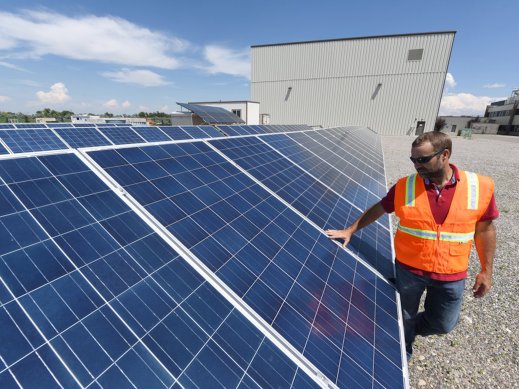
The talented analysts at Wood Mackenzie recently published an important interpretation of the Inflation Reduction Act (IRA) that calls into question when and even if the solar investment tax credit (ITC) will sunset.
WoodMac finds that "[b]ased on the language in the IRA, our view is that these tax credits will be extended for substantially longer than 2032."
Unfortunately, Congress provided this benefit only to businesses and similar entities and specifically not to homeowners.
The ITC is codified in the Internal Revenue Code (Title 26 of the U.S. Code) and is available in two different sections: Section 25D, which applies to individual taxpayers (i.e. homeowners), or Section 48, for businesses and other entities.
The text of the IRA extended the ITC beyond 2023, its prior sunset, but modified both sections in different ways. Section 25D was modified by extending the sunset schedule by 11 years with the tax credit amount being 30% of the system cost through 2032 and a step down to 26%, then 22%, then 0% after 2034.
Section 25D(h) conclusively states, "[t]he credit allowed under this section shall not apply to property placed in service after December 31, 2034." The Section 48 ITC was treated very differently. The prior 30 percent credit of Section 48 was extended through 2024, after which a new technology-neutral credit will be available under Section 48E.
Instead of affirmatively terminating the credit, as it did for homeowners, Congress prescribed a phaseout schedule that would begin in the latter of 2032 or the year in which the US electricity sector reduces carbon emissions to less than 25% of the 2022 level (26 U.S.C. § 48E(e)(3), 26 U.S.C. § 45Y(d)(3)).
What are the odds of the US electricity sector reducing its emissions by 75% within 10 years?
According to the Energy Information Administration (EIA), the US electric power sector emitted 1.545 billion metric tons of CO2. Poignantly, the EIA forecasts that electric power emissions will drop but plateau in the late 2030s at about 1.2 billion metric tons, well above the threshold prescribed in the extended ITC.
It would appear that the non-homeowner ITC could be here to stay until the industry and other renewable generation technologies supplant our polluting generation stock, and the year 2032 would seem immaterial concerning a looming sunset.
WoodMac succinctly captures the significant upshot: "Absent IRA repeal, this means that instead of several hundred billion dollars in tax credits for new renewables and storage through 2032, the real money on the table is on the order of trillions of dollars over multiple decades."



